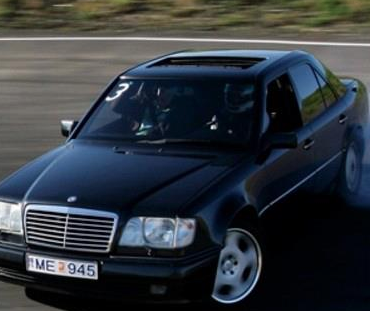I have decided to bring a new feature to my blog – I’m calling it the research update. A research update is where I’ll present recently published forensic alcohol toxicology studies to the WOA community that I think may be of interest. To kick off this new feature, I will discuss two studies recently published in the Canadian Society of Forensic Science Journal in December 2012. This issue commemorates the 75th anniversary of the RCMP’s (Royal Canadian Mounted Police) Crime Detection Laboratory established in 1937 in Regina. Quebec established its forensic lab in 1914 and Ontario established their’s in 1932.
The first study is:
Korkosh, S.L., Hackett, J.A., and Montpetit, J.C., “Blood Alcohol and Breath Alcohol Comparisons Using the Intox EC/IR II”, Canadian Society of Forensic Science Journal, 45: 195-200, 2012
Breath alcohol testing instruments in the United States, Canada and many other countries are based on a blood breath alcohol ratio (BBR) of 2100:1. If the BBR of an individual is greater than 2100:1, the person’s BAC will be underestimated by the breath. If the blood breath alcohol ratio of an individual is less than 2100:1, then the BAC will be overestimated by the results of the breath alcohol testing instrument.
BBR>2100:1 BAC is underestimated
BBR<2100:1 BAC is overestimated
Although there have been numerous studies on the BBR, this is the only one I could find published on BBRs as determined using the Intox EC/IR II.
Sixteen male and eleven female subjects consumed alcohol at RCMP-sponsored Qualified Technician training courses in Halifax, Vancouver (HV) and Winnipeg (W) and obtained BACs of between 0.031 to 0.153 g/100mL. Blood samples were collected within 4 minutes after the breath tests and analysed by headspace GC. BrACs were determined using an Intoximeter EC/IR II. The blood and breath samples were collected at least 30 minutes after drinking ceased. The instrumental criteria for the acceptance of a breath sample as determined by the RCMP National Forensic Service is that a minimum flow rate of 12 L/min and a minimum volume of 1.5 L must be provided, followed by a drop in flow rate of 5% from the maximum flow rate. The mean blood breath alcohol ratio using all the data with a truncated BrAC result was 2675:1 and ranged between 2170:1 to 3360:1. The mean BBR for female subjects was 2658:1 compared to 2688:1 for male subjects. The percentage underestimation of BAC by the Intox EC/IR II ranged from 15 to 28% in subjects with a BAC of 0.080 g/100mL or more. There were no overestimations of BAC. The mean BBR increased in twelve subjects from 2411:1 for untruncated BrACs to 2566:1 for truncated results.
The authors concluded:
In conclusion, breath analyses using the Intox EC/IR II underestimates the BAC like other Approved Instruments used in Canada.
The following Table shows the truncated BrAC, BAC, and BBR for the subjects with a BAC of 0.080 g/100mL or greater.

This study agrees with other laboratory and field studies (WOA30401-WOA30411) that breath alcohol testing instruments calibrated on a BBR of 2100:1 underestimate the BAC. Truncation of BrAC results cause a greater underestimation of BAC and increases the BBR. No significant differences occurred in the BBRs of female compared to male subjects which agrees with other studies (WOA30408, WOA30418, WOA30419).
The next study of interest in this journal is:
Booker, R., Lehmann, G.P., and Korkosh, S.L., “Calibration Stability of the Alco-Sensor FST Over a Seven Week Period”, Canadian Society of Forensic Science Journal, 45: 176-178, 2012
Small portable breath alcohol screening devices have been used since 1976 by the police in Canada at the roadside to give them reasonable grounds to demand an evidential breath alcohol test. As the technology of these devices has improved over the last nearly 40 years, the recommended calibration frequency of the Alcohol Test Committee has decreased from once every 7 days to once every 15 days and now currently to once every 31 days.
The calibration stability of five Alco-Sensors FST screening devices was checked at one week intervals for seven weeks. Two wet bath simulator tests (using a 0.100 g/100mL alcohol standard) were conducted on each occasion. Results outside 0.095 to 0.105 g/100mL would require a re-calibration of the devices, which was not necessary during the seven weeks of testing. The five Alco-Sensor FSTs were exposed to simulated operational conditions including transportation in a motor vehicle, breath testing, changes in ambient temperatures and in one case being accidentally dropped. The following Table shows the alcohol standard test results of the five devices at one, four and seven week periods.

The authors concluded:
The results of this study indicate that a monthly calibration check schedule is scientifically suitable for the Alco-Sensor FST.
For more information about these studies, the Canadian Society of Forensic Science Journal and the recommendations of the Alcohol Test Committee, check out their website at www.csfs.ca.





